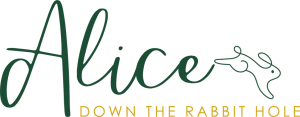Our research
We can help you with both qualitative and quantitative research. Whereas with quantitative research you will mainly answer the ‘what?’, with qualitative research you will get a better answer to the ‘why?’ and the ‘how?’.
Co-creation brainstorms
Co-creation brainstorms are a very common item on our agenda. We invite 12 to 15 people, with a specific profile, to brainstorm with you about your concepts and ideas in a relaxed atmosphere, over some food and drinks. Participants get the chance to share their opinions and visions, and propose possibilities and ideas of their own via games, crafts and guided exercises. A session lasts about 3,5 hours, and usually takes place outside working hours. The brainstorm can also be held as a live online session, although this format is more limited in possibilities and has a shorter duration.
We often get asked what kind of information you get from a co-creation session. That’s why we’re giving you a sneak peek into some of the results!
Online co-creation trajectories
Since COVID, basically everything can be done online, including co-creation workshops. In contrast to a classic brainstorming session, these online workshops are open for a certain time, say a week, so that participants can do the exercises when it suits them best. In the course of the duration of the workshop, there are various ways to interact with us, and with each other, and input can be provided in numerous ways, ranging from surveys to creating virtual prototypes, commenting on visuals, or collecting and editing visuals themselves.
In-depth interviews
In an in-depth interview, participants are approached individually, so they are neither hindered from telling their story freely, nor influenced (but also not inspired) by the other participants in the study. An in-depth interview lasts at least one to one-and-a-half hours, and can take place either physically or online.
Customer experiences
Associated with a co-creation brainstorm, in the context of an online workshop or during an in-depth interview, we can ask participants to test, taste and experiment with products. By paying attention not only to what they do, but also to why and how they do it, you get a deep insight into customer experiences.
Living environment discovery
As for the customer experience, we can also ask the participants to sketch their specific context and map the customer journey as they experience it themselves. Using visual material and feedback on the motivation of choices made, you can get a good picture of the consumer’s world, and how they go through the decision-making process of day-to-day choices.
Aha moments
In our qualitative research, we rely almost exclusively on open-ended questions, leaving the participants a lot of freedom to fill in the assignment as they see fit. This produces results that are far from straightforward to process, but that are often full of ‘aha moments’, or ‘I had never thought of it that way’ experiences. By limiting people as little as possible, you find out an awful lot about perceptions and interpretations, and how others interpret a particular context.
Quantitative research
We can also carry out several types of quantitative research for you. For this, we use tools and platforms provided by our partners that allow us to collect data in a representative way. In this way we can reach large groups of people both in Belgium and abroad.
Quick surveys (short surveys via een app)
With a quick survey you can get quick – matter of a few days – feedback on pressing questions, such as who your concept appeals to, how big that group is, what they like or dislike, why they think or feel that, and so on. A quick survey consists of only about five to ten questions (max. 15), and is completed by participants whenever it suits them best, via an app.
Online surveys
Online surveys are longer than quick surveys – and therefore take longer to complete – and preferably are sent via e-mail. We also prefer not to make them too long, as we do not only want responses from the super-motivated, making them no longer as representative. Our background in both technical knowledge and market research techniques allows us to get the most out of a survey, without being too directive. Can be used, among other things, to explore the target group, pinpoint the main pain points, check assumptions, or validate ideas.
Sensory research
Food has to be tasty, so that also needs to be investigated. Even in cosmetics and household products, for instance, the smell and other sensorial aspects matter a lot. Sensory research is a specific field within market research that requires the right knowledge and resources to be done properly. Fortunately, we have partners who specialise in this field and can conduct consumer sensory tests the way they are meant to be done, meeting the highest standards. We can guide you in incorporating sensory research into your journey, not only when to do it, but also what options are available.
Home use testing
Home use testing can be approached both qualitatively and quantitatively. We take care of the qualitative testing, but for quantitative testing we rely on our partners. For certain products, it is difficult to test the products out of their specific context, and it is better to get feedback during effective use, such as for example cooking fats, nappies or day creams. Like for other types of quantitative research, we can guide you through decisions such as when it is best to use these tests, and how (qualitative or quantitative, defining the right objectives and questions, etc.).
